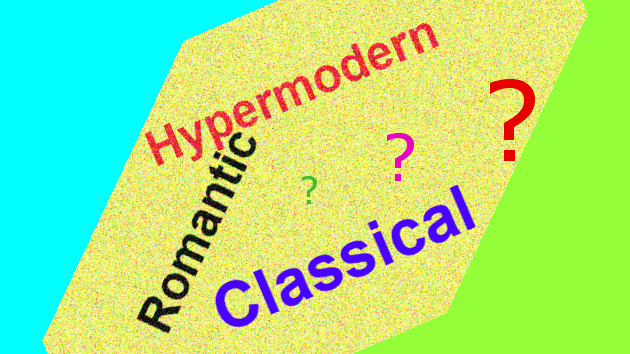
The Ages of Chess
Caveat: The terms I use in the below essay are strictly my own invention and are not, by any means, generally accepted nomenclature.
* * * * * * * * * * * * * * * * * * * * * * * * * *
\ Chess Comes of Age /
Around the end of the 15th century certain changes in the game of chess started solidifying. The changes weren't at all complex but they were certainly profound enough to completely revise the nature of the game. General acceptance of these changes marked the beginning of a new era in chess that would endure for about 400 years - the Age of Artistry. During those four centuries, chess had mutated from a game exclusive to royalty, nobility, the clergy and the wealthy to a game of intellectuals and skilled amateurs of means and leisure - definitely a major step towards popularization.
Around the middle-to-end of the 19th century other great changes occurred, not to the nature of the game itself, but to the nature of the playing. Because of the national organizations that developed, bringing players of skill together in clubs and tournaments, chess became less an artistic and intellectual exercise and more a competitive sport. Besides, or even because, of the sporting aspect or the emphasis on the competitive side of chess, theory development became an even more crucial element. This was the Age of Professionalism.
The term "theory" can refer to two distinct areas of chess. The first area concerns itself with the "laws" or principles that enable a player to better understand the game. While some tactics fall within this area, generally it encompasses the more positional aspects such as blockades, outposts, backward pawns and the like as well as general considerations such as controlling the center, gaining space or accumulating small advantages.
The second area of theory deals with openings. Since the potential variation, even in the opening phase, is for all practical purposes endless, best play, or what is considered best play, has been slowly and tediously documented. With the possibilities so unrestricted, openings remain in the realm of theory, unlike endings which can be quite definitive though extremely complex. This theory or book knowledge attained such a high level that even in the first quarter of the 20th century some players, such as Capablanca, felt that chess was played out with very little left to be discovered. But this wasn't the case and theory was pushed to even greater heights.
The last quarter of the 20th century ushered in a new age of chess - the Age of Computers. Not only were remarkably search-able databases created containing virtually every important game ever played, but chess engines capable of beating the best players in the world have demonstrated the power of brute force against that of ideas. There is no question that computers play differently than people. As Bronstein noted, a computer doesn't so much play a game as it calculates a position. In this sense people and computers do entirely different things on a chess board.
During the Age of Artistry very little theoretical knowledge had been amassed. Despite this, or perhaps because of this, many charming, if often flawed, games have been preserved. There was no shortage of creativity. Because there was no reliable method of ascertaining relative strengths of players and no ranking system in place, many of these games were one-sided. However, it might be argued that the one-sidedness of these games, since they exposed weakness in play rather bluntly, also aided in the development of theory during a time when little in-depth theoretical work was being conducted.
Later, during the Age of Professionalism, when worthy opponents regularly faced each other across the board, theory became more involved and less intuitive. Advancement in theory was the result of experience, hard work and changes in perceptions. As we've learned so far from the Age of Computers, what we learned from the previous ages isn't set in stone. Computers don't consider ideas, but instead examine every possibility within their inherent limitations. This leads computers to find moves, line and variations that humans may never have even considered due to their strangeness or seemingly pointlessness.
Classical players have employed anti-computer styles to try to take advantage of what's been considered weaknesses in the way programs evaluate positions. As computers grow more powerful and their programs more advanced, this approach has become less and less effective. Players who were weaned on computer chess sometimes approach chess with the same style of calculating that computers employ. This seems to be a natural progression. But in trying to imitate computers, in using computers in home preparation, in studying computer-generated lines, not only does something seem to be lost, but there seems to be a resignation of human spirit. Just as the first Age displayed creativity in their lively games, the second Age brought out a subtler form of creativity. Since there was nothing to rely on except the human mind and spirit, players found, or created, different ways to understand the game and to cope with the onslaught of new ideas.
And here we are in this new Age. We bow to computers, depend on them for our analyses, accept their verdicts, try to imitate their style. We use them in our relentless research of critical positions and in preparing for our next match or tournament. World champions accuse world champions of using computers to cheat (never, apparently, considering the irony). Yet, it seems, one seldom considers the possibility, however remote, that humans can indeed learn to outplay computers, that brute force is not ultimately more powerful than ideas. Perhaps it's better than existing ideas - as has been demonstrated time and again - but existing ideas are perhaps just the tip of the iceberg of human thought.
I sure hope so.



